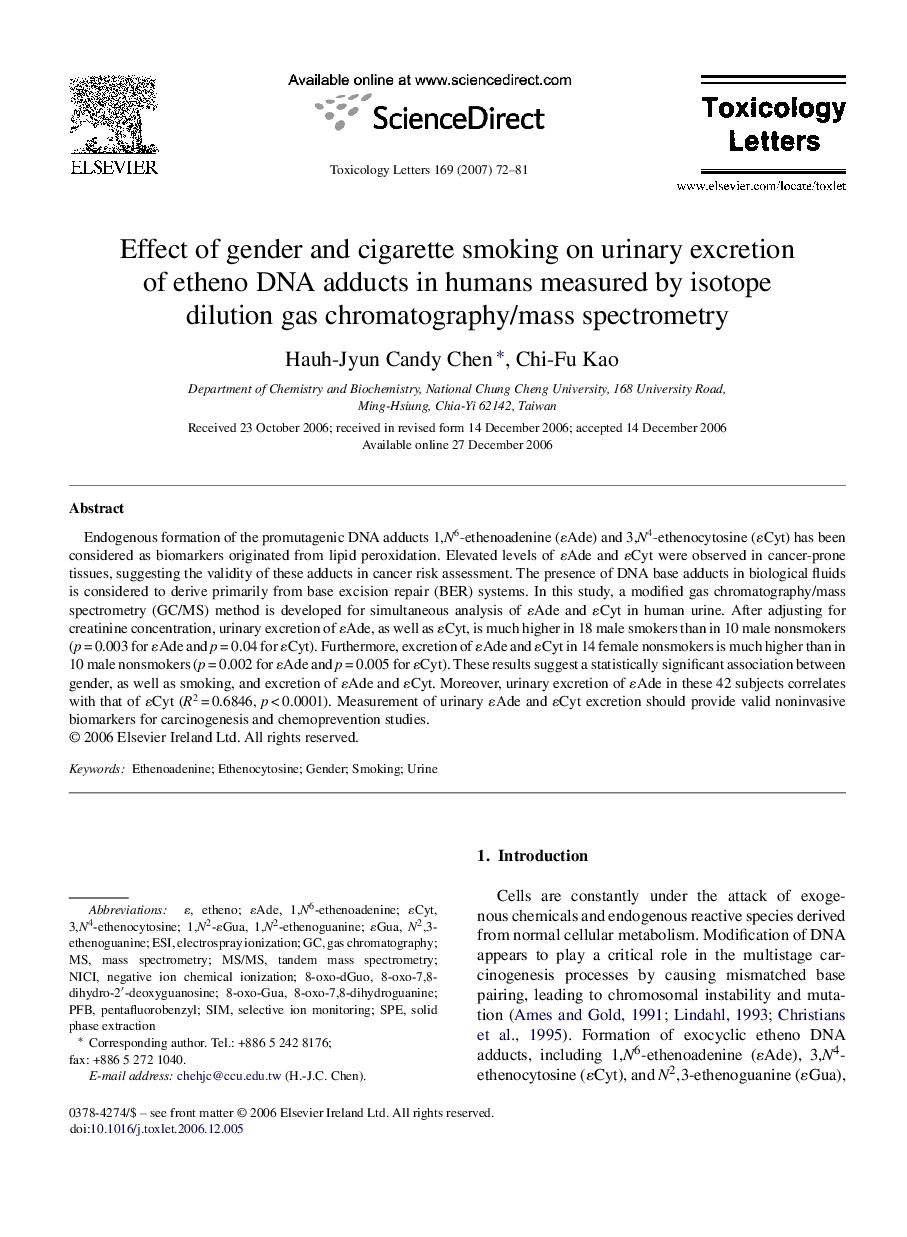| Article ID | Journal | Published Year | Pages | File Type |
|---|---|---|---|---|
| 2602176 | Toxicology Letters | 2007 | 10 Pages |
Endogenous formation of the promutagenic DNA adducts 1,N6-ethenoadenine (ɛAde) and 3,N4-ethenocytosine (ɛCyt) has been considered as biomarkers originated from lipid peroxidation. Elevated levels of ɛAde and ɛCyt were observed in cancer-prone tissues, suggesting the validity of these adducts in cancer risk assessment. The presence of DNA base adducts in biological fluids is considered to derive primarily from base excision repair (BER) systems. In this study, a modified gas chromatography/mass spectrometry (GC/MS) method is developed for simultaneous analysis of ɛAde and ɛCyt in human urine. After adjusting for creatinine concentration, urinary excretion of ɛAde, as well as ɛCyt, is much higher in 18 male smokers than in 10 male nonsmokers (p = 0.003 for ɛAde and p = 0.04 for ɛCyt). Furthermore, excretion of ɛAde and ɛCyt in 14 female nonsmokers is much higher than in 10 male nonsmokers (p = 0.002 for ɛAde and p = 0.005 for ɛCyt). These results suggest a statistically significant association between gender, as well as smoking, and excretion of ɛAde and ɛCyt. Moreover, urinary excretion of ɛAde in these 42 subjects correlates with that of ɛCyt (R2 = 0.6846, p < 0.0001). Measurement of urinary ɛAde and ɛCyt excretion should provide valid noninvasive biomarkers for carcinogenesis and chemoprevention studies.
